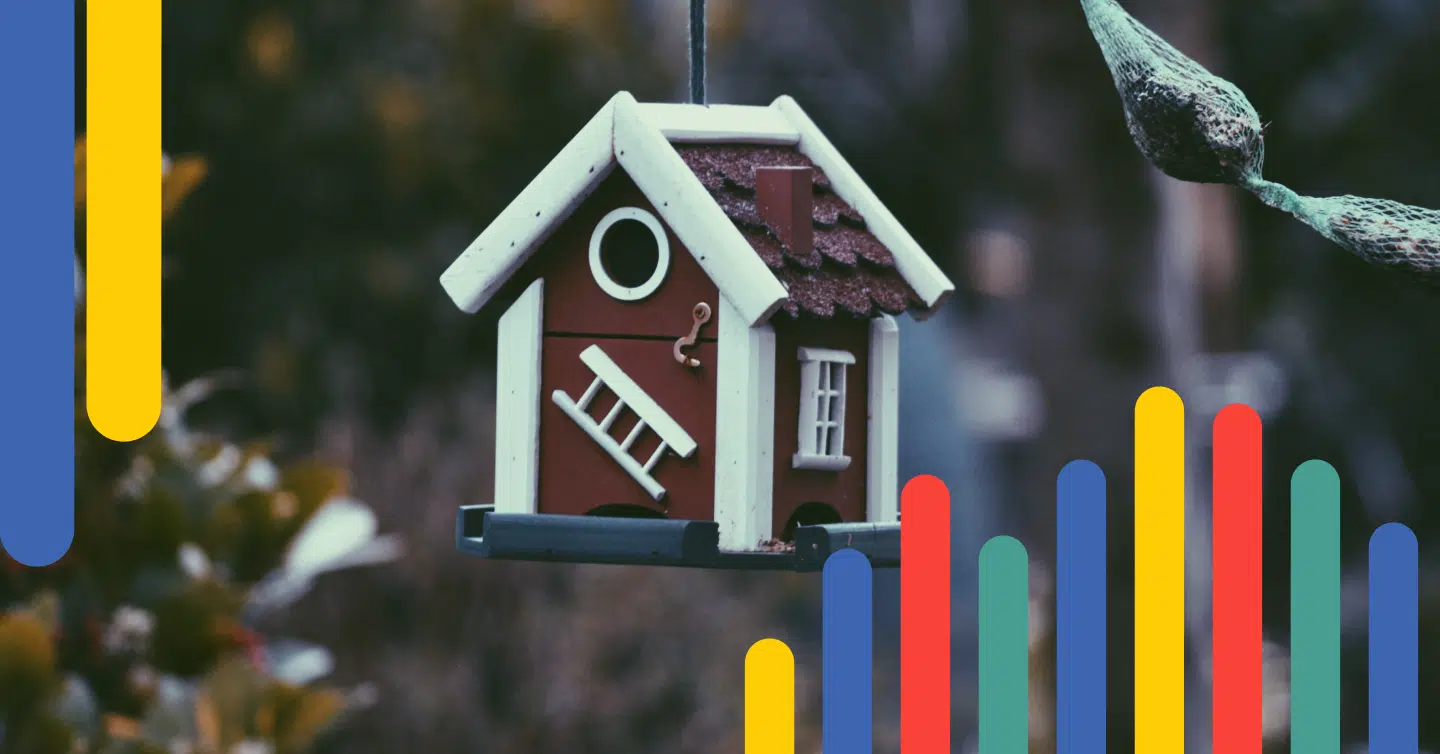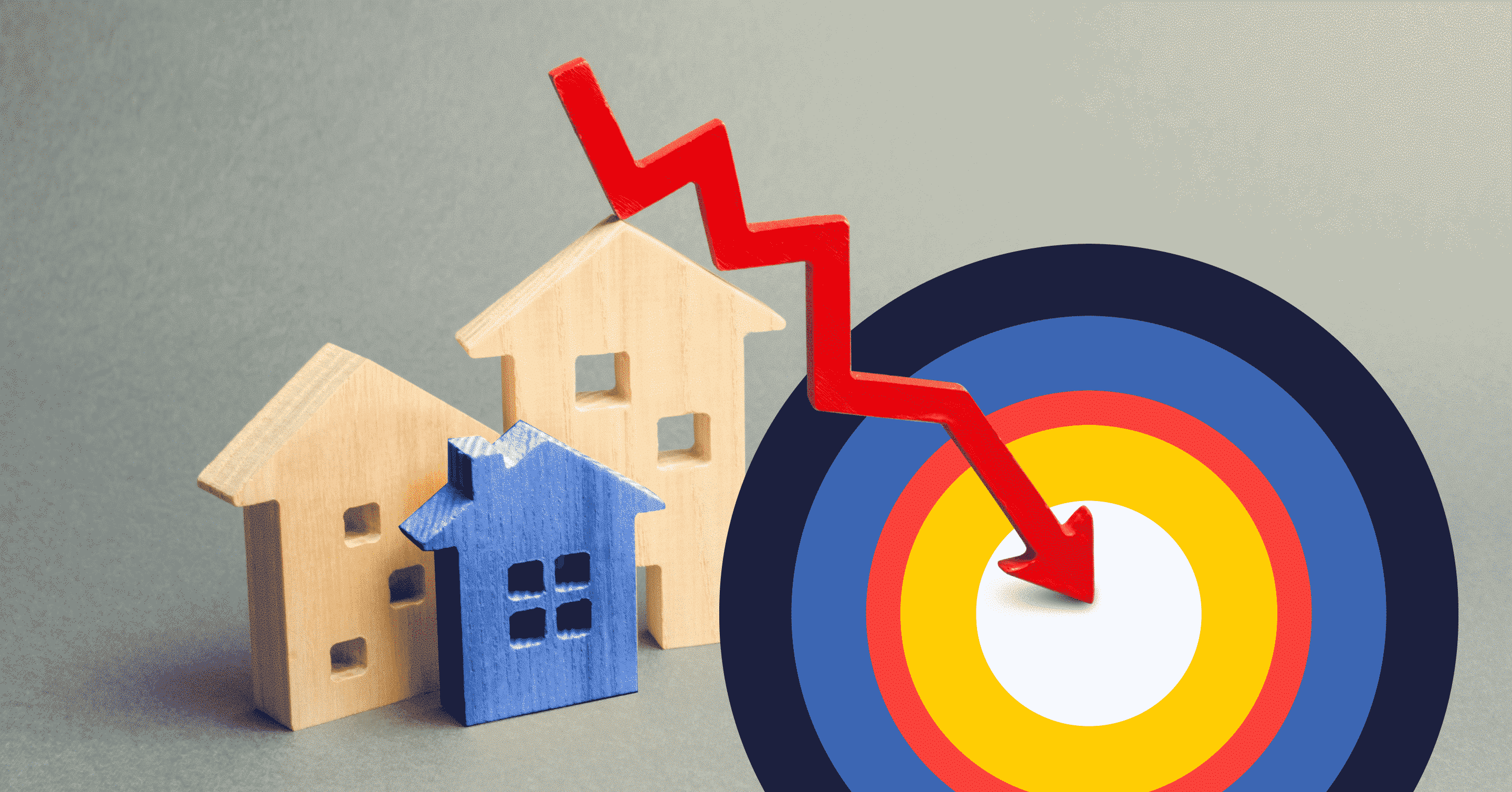Renewal and Refinancing #Featured articles #Guides
Renewal and Refinancing #Featured articles #Guides
5 Ways to Get Out of Negative Amortization on Your Mortgage

Table of contents
If you have a mortgage, you’re likely familiar with the concept of amortization. It’s gradually paying off your loan over time through regular payments. This, in turn, allows you to grow your home’s equity. However, a scenario called negative amortization can hinder your progress in building said equity and potentially lead to financial difficulties. Negative amortization occurs when your monthly mortgage payments are insufficient to cover the interest owed, causing your loan balance to increase instead of decrease.
This comprehensive guide will explore the intricacies of negative amortization and provide 5 effective methods to exit this challenging situation. We’ll explain how negative amortization happens, why it’s crucial to address it promptly and outline practical steps you can take to resolve this issue and protect your financial well-being.
Key Highlights
- Negative amortization is when your monthly mortgage payments are insufficient to cover the interest owed, increasing the loan balance.
- Negative amortization often occurs with variable-rate mortgages (VRMs) and interest-only payment mortgages.
- Increasing your payments, converting to a fixed-rate mortgage, refinancing, changing your mortgage terms, and seeking professional advice are effective strategies to overcome negative amortization and payment shock.
What is Negative Amortization?
Negative amortization is when your monthly mortgage payments are insufficient to cover both the interest and principal portions. The unpaid interest increases the loan balance rather than decreasing it over a set period of time.
- Over-amortization on a variable-rate mortgage (VRM) occurs when the interest component of your mortgage payment exceeds the fixed payment amount. This unpaid interest causes the deferred interest to be added to the principal balance.
- As a result, your loan balance grows, and you may find yourself owing more than the original loan amount. If scheduled payments are not increased as the mortgage balance grows, the mortgage will risk being over-amortized compared to its amortization schedule.
Negative amortization, also called over-amortization, is commonly associated with variable-rate mortgages (VRMs) and interest-only payment plans.
- With VRMs, the interest rate fluctuates based on market conditions, and if the rate rises significantly, you may need more than your monthly payment to cover the increased interest.
- Interest-only payment plans allow borrowers to make minimal payments that cover only the interest portion of the loan, resulting in deferred principal payments and a higher possibility of negative amortization.
How Negative Amortization Happens
Negative amortization can happen for a variety of reasons, but it is most commonly associated with variable-rate mortgages and interest-only payment plans.
Here’s how negative amortization happens:
1. Variable-Rate Mortgages (VRMs): VRMs come with a static mortgage payment which doesn’t fluctuate with interest rates. If the prime rate rises in rapid succession, as it did in much of 2022 and 2023, the payment may not be enough to compensate for the total interest being charged each month. This mortgage risks hitting its trigger rate, at which its payments do not fully cover each payment cycle’s interest portion. As a result, the unpaid interest is added to the principal balance, leading to negative amortization. Most mortgages have a negative amortization limit, typically up to 105% loan-to-value(LTV) ratio on insured mortgages and 80% LTV on uninsured mortgages.
2. Interest-Only Payment Plans: Interest-only payment plans allow borrowers to make payments that cover only the interest portion of the loan for a specified period. No principal payments are made during this period, and the loan balance remains unchanged. Once the interest-only period ends, the borrower must begin making principal payments, which can significantly increase the monthly payment amount. Interest-only payments will create negative amortization as the borrower loses time making principal payments toward their mortgage while on an interest-only plan.
We’re curious…
How to Get Out of Negative Amortization
If you are in a negative amortization situation, it is crucial to take proactive steps to resolve it and protect your financial well-being.
Paying off your mortgage balance in full is the easiest and simplest solution though most of us would be hard-pressed to have that much cash laying around.
Here are 5 effective methods to get out of negative amortization on your mortgage:
Method 1: Increase Your Payments to Reduce Negative Amortization
Increasing your monthly mortgage payments is one of the most straightforward ways to combat negative amortization. By paying more than the minimum required amount, you can reduce the gap between your payment and the interest owed, effectively tackling the growing loan balance. Here are some strategies to consider:
- Proactive Payment Increases: If you anticipate entering negative amortization or are already experiencing it, consider increasing your payments proactively. You can do this by making more frequent payments or increasing the payment amount. By aligning your payments with your original contract terms, you can mitigate the negative impact of interest accumulation.
- Lump Sum Prepayments: Another effective strategy is to make lump sum or extra payments towards your mortgage. By putting down a more significant sum, you can reduce the principal balance and decrease the amount of interest accruing. This method can be particularly beneficial if you are in the middle of your mortgage term and expect interest rates to fall shortly.
It’s important to note that if you have a closed mortgage, you may incur additional interest charges when making lump sum prepayments or increasing your regular payment beyond your payment cap. Review the terms of your mortgage agreement and consult with your lender to understand the potential implications before proceeding.
Method 2: Convert to a Fixed-Rate Mortgage
If you currently have a variable-rate mortgage and face negative amortization, converting to a fixed-rate mortgage can provide stability and help you avoid further increases in your loan balance. Locking in a fixed interest rate allows you to establish consistent monthly payments and protect yourself from future interest rate hikes.
Here’s what to consider:
- Consult Your Mortgage Lender: Contact your current mortgage provider to explore converting your VRM to a fixed-rate mortgage. They can provide you with information on the available options, any associated fees, and the process involved in the conversion.
- Consider the Pros and Cons: Before deciding to convert, carefully evaluate the pros and cons of fixed-rate mortgages. While they offer stability and protection against interest rate fluctuations, they typically come with slightly higher rates than variable-rate mortgages. Analyze your long-term financial goals, assess your risk tolerance, and consult with mortgage experts to determine if a fixed-rate mortgage is the right choice for you.
If you feel that interest rates have stabilized and have the cash to prepay your mortgage to return to its original amortization schedule, consider asking your lender to switch your variable-rate mortgage (VRM) to an adjustable-rate mortgage (ARM). An adjustable-rate mortgage (ARM) doesn’t suffer from risks such as trigger rate, trigger point or negative amortization, which affect VRMs.
We’re curious…
Are you a first-time buyer?
Method 3: Refinance Your Mortgage
Refinancing your mortgage involves obtaining a new loan to replace your existing one, often with more favourable terms. Refinancing can be a valuable strategy to address negative amortization and improve your financial situation.
Here’s how it works:
- Assess Your Options: Research and compare different lenders and mortgage products to find the best refinancing option for your needs. Consider factors such as interest rates, repayment terms, closing costs, features and any potential penalties for early repayment.
- Improve Your Credit Score: Before applying for refinancing, improve your credit score. A higher credit score can help you qualify for better interest rates and loan terms, saving you money in the long run. Paying down debt such as that on your student loan or credit card, making timely payments, and correcting errors/omissions on your credit report can improve your creditworthiness.
- Calculate the Potential Savings: Use an amortization schedule or online mortgage calculators to estimate the impact of refinancing on your monthly payments and overall interest costs. Compare these figures with your current mortgage to determine if refinancing will be financially beneficial in the long term.
- Consider a Shorter Term: If you can afford higher monthly payments, consider refinancing to a shorter-term mortgage. In the right market or a lender’s promotional period, shorter terms come with lower interest rates and allow you to pay off your mortgage more quickly, reducing your risk of negative amortization.
Method 4: Change Your Mortgage Terms
Another way to address negative amortization is to change the terms of your mortgage agreement. Adjusting the time you have to repay the loan can reduce your monthly payments and minimize the impact of negative amortization.
Here’s what you need to know:
- Evaluate Your Options: Review your current mortgage agreement and consider switching to a different term that better aligns with your financial goals. For example, if you have a 20-year mortgage amortization, switching to a 25-year amortization can help better manage your loan payment while reducing the risk of negative amortization.
- Consult Your Lender: Reach out to your mortgage lender to discuss the possibility of changing your mortgage. They can provide information on the options, associated fees, and the potential impact on your monthly payments. Also, consider seeking advice from a mortgage broker unassociated with your lender to provide honest and transparent advice for your situation.
- Calculate the Impact: Use an amortization schedule or online mortgage calculators to compare the monthly payments and total interest costs of different mortgage terms. A cost-savings analysis between options will help you assess the financial implications and make an informed decision.
Method 5: Seek Professional Advice
If you need help with the best course of action or need personalized guidance, it’s wise to seek professional advice. Mortgage experts, financial advisers, and mortgage brokers can provide valuable insights tailored to your situation. They can assess your financial circumstances, analyze the terms of your current mortgage, and recommend suitable strategies to address negative amortization.
Here’s how they can assist you:
- Expert Guidance: Mortgage professionals have in-depth knowledge of the mortgage industry and can guide you through the complexities of negative amortization. They can explain your options, help you understand potential risks and benefits, and provide recommendations based on your unique circumstances.
- Loan Modification Assistance: If you’re facing financial hardship due to negative amortization, mortgage experts can help you explore loan modification options. They can negotiate with your lender on your behalf to lower your interest rate, extend your loan term, or modify other mortgage terms to make it more manageable for you.
- Referral to Legal Professionals: In complex cases, mortgage experts may refer you to legal professionals specializing in mortgage law. These professionals can provide legal advice, review your mortgage agreement, and help you navigate any legal implications of resolving negative amortization.
Frequently Asked Questions
Welcome to our Frequently-Asked Questions (FAQ) section, where we answer the most popular questions designed and crafted by our in-house mortgage experts to help you make informed mortgage financing decisions.
What should I do if my mortgage has a negative amortization?
The simplest way to remedy negative amortization on your mortgage is to increase either your mortgage payment or prepay your mortgage principal. Depending on your monthly cash flow and built-up savings, you can do either or a combination of these options. Before you exercise these prepayment privileges, be sure to check for any annual limits with your lender to avoid any prepayment penalties..
What does it mean if my mortgage balance is higher than what my home is currently worth?
If your mortgage balance is higher than your property’s value, then you’re on the hook for paying off more than the original contracted mortgage amount. When your mortgage reaches maturity, you’ll have to decide between
- Paying off the excess balance with savings to renew to an affordable mortgage payment.
- Refinance your mortgage into a new mortgage term with an extended amortization.
- Realise payment shock to compensate for the bigger balance owing on your mortgage.
- Sell your property with some profit.
You should take comfort in knowing that historically properties in Canada have always surged in value after a recession, and this is only a temporary setback due to the unprecedented rate hikes by the Bank of Canada to curb inflationary pressures.
What are alternatives to amortization?
While amortization is the most common method of repaying a loan, alternatives such as interest-only payments and graduated payment mortgages (GPM) exist. Interest-only payments allow borrowers to pay only the interest portion of the loan for a specified period, while GPMs start with lower initial payments that gradually increase over time.
Is negative amortization illegal in Canada?
Negative amortization itself is not illegal in Canada. However, lenders must comply with regulatory guidelines and disclose the risks of negative amortization to borrowers. It’s essential for borrowers to fully understand the terms of their mortgage and the potential consequences of over-amortizing their outstanding balance – also known as negative amortization.
What is the difference between negative amortization and reverse amortization?
Negative amortization occurs when your loan balance increases due to insufficient payments. While reverse amortization is when the loan balance grows over time. Reverse amortization typically applies to certain types of loans, such as reverse mortgages, where the borrower receives payments from the lender instead of making payments. On a reverse mortgage, interest payments are added to their original principal balance. However, as the property increases in value, a loan-to-value (LTV) of 55% maintains a negative-equity guarantee while they carry this increasing balance loan.
Find a better rate, and we’ll match it, beat it, or give you $500*.
*Conditions Apply
With nesto, it’s stress-free
Final Thoughts
When faced with negative amortization on your mortgage, it’s crucial to take action to protect your financial well-being.
By understanding the causes of negative amortization and implementing the strategies outlined in this guide, you can overcome this challenge and regain control of your mortgage. Whether increasing your payments, converting to a fixed-rate mortgage, refinancing, changing your mortgage term, or seeking professional advice, each method offers a viable solution to address negative amortization.
Remember, the key is to act promptly and proactively to prevent further financial strain and ensure a brighter financial future.
At nesto, we understand the complexities of mortgage repayment and are here to help you navigate the process. Contact our mortgage experts for personalized advice and guidance tailored to your needs. Let us assist you in resolving negative amortization and achieving your homeownership goals with confidence and peace of mind.
Ready to get started?
In just a few clicks, you can see our current rates. Then apply for your mortgage online in minutes!















